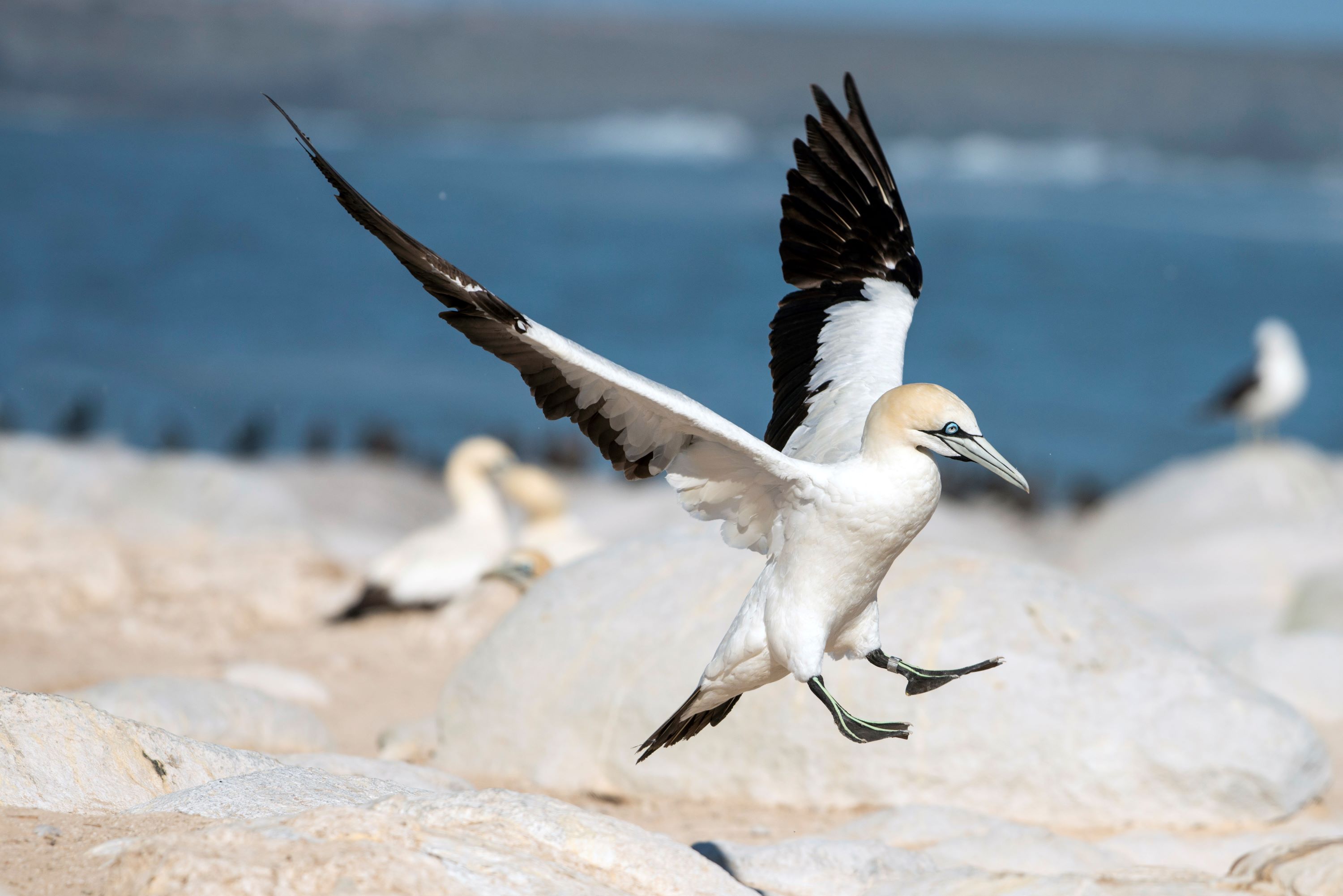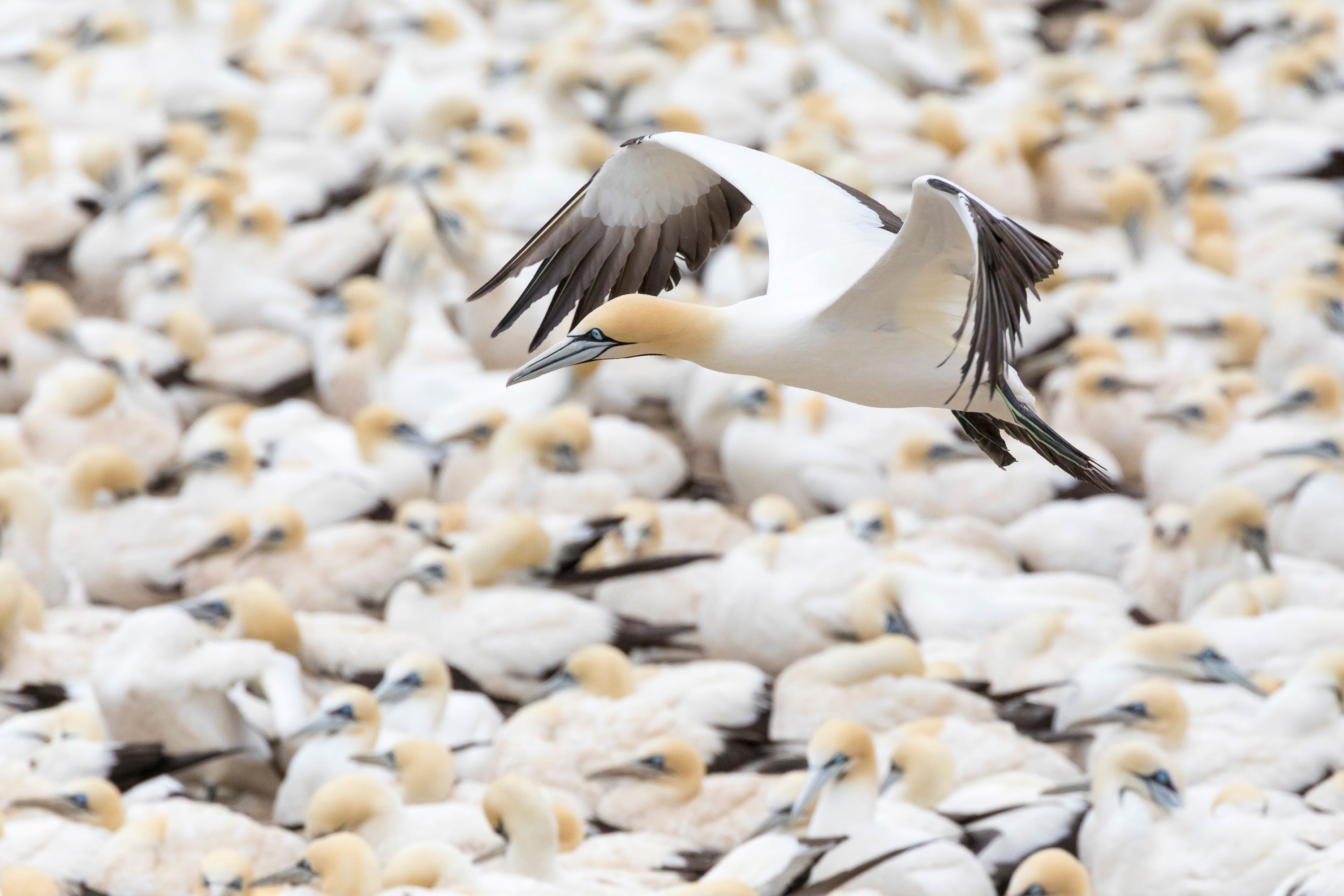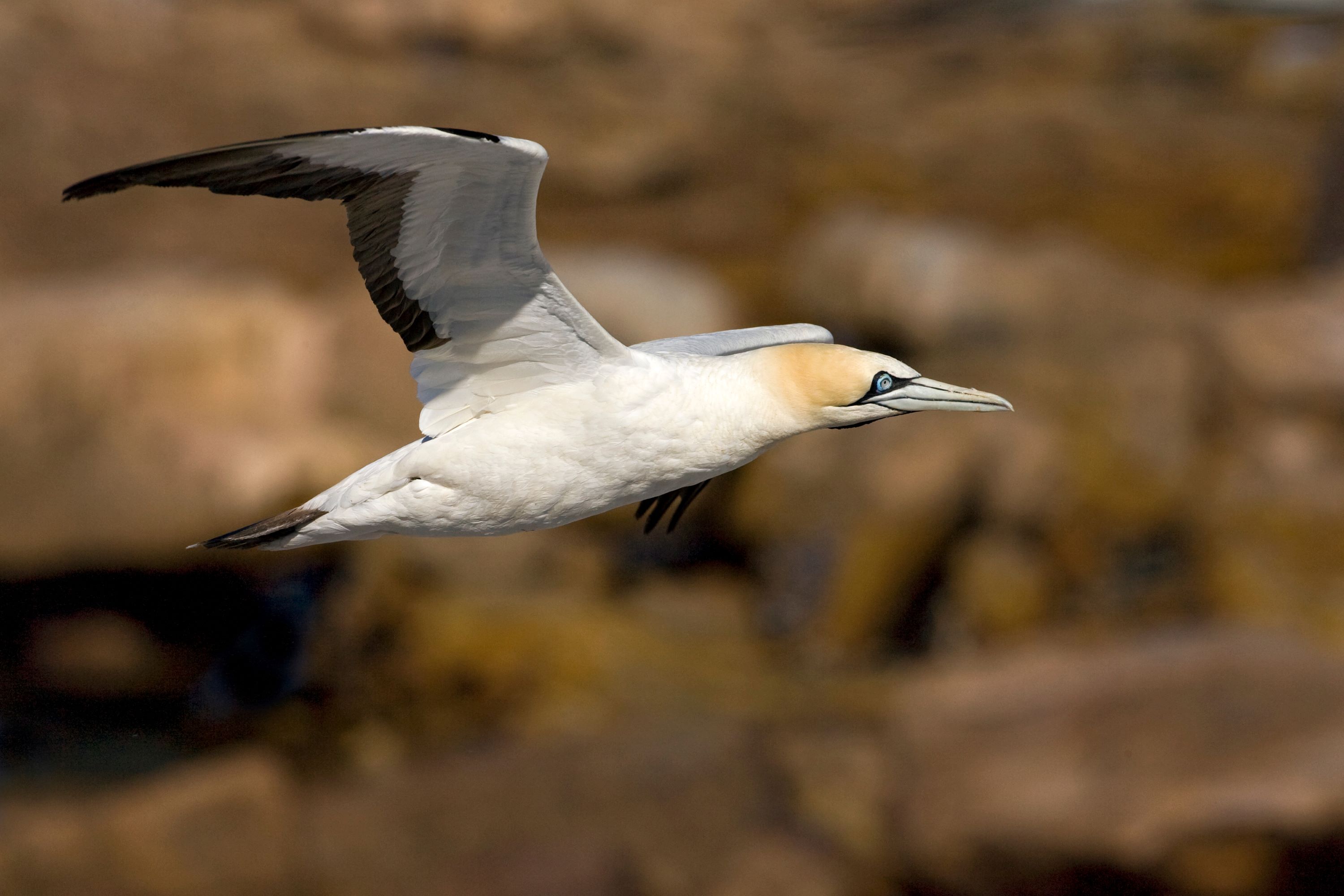
Cape Gannet: The Majestic Seabird, Morus capensis
Introduction to the Cape Gannet
The Cape Gannet, Morus capensis, stands as a majestic and compelling seabird, inhabiting the coastal waters of southern Africa. As a member of the Sulidae family, this species is known for its impressive diving skills and distinctive appearance. The Cape Gannet plays a vital role in its marine ecosystem and is a species of great interest to ornithologists and bird lovers alike.
Physical Description
An adult Cape Gannet is a large bird, with a body length of about 84-94 cm and a wingspan reaching up to 1.8 meters. They are characterized by their predominantly white plumage, black-tipped wings, and a striking yellow head. Their strong, pointed bills are blue-grey, perfectly designed for plunge-diving, and their blue skin around the eyes and throat adds to their distinctive appearance.
Habitat and Distribution
Cape Gannets are found primarily in the southern African region, frequenting the coastal waters off Namibia and South Africa. They are pelagic birds, spending most of their time at sea and coming to land only for breeding purposes. Their breeding colonies are located on a few isolated islands off the coast of Namibia and South Africa, including Malgas Island, Bird Island, and Lambert's Bay.

Feeding Habits and Diet
The diet of the Cape Gannet consists mainly of fish, particularly shoaling species like sardines and anchovies. They are phenomenal divers, capable of plunging from heights of 30-40 meters into the ocean at high speeds to catch their prey. Their hunting technique involves folding their wings back just before hitting the water to minimize impact, allowing them to dive to depths of up to 10 meters.
Breeding Behavior and Nesting
Cape Gannets breed in densely populated colonies on offshore islands. They are monogamous, often forming long-lasting pair bonds. The birds build their nests from seaweed, feathers, and other materials, cemented together with guano. These nests are used year after year and can become quite large over time.
Courtship and Mating Displays
Courtship in Cape Gannets is a dynamic and noisy affair, involving elaborate displays such as mutual preening, bill-fencing, and head-shaking. These behaviors strengthen the bonds between pairs and are essential for successful mating and breeding.

Egg Laying and Incubation
The female usually lays a single, large egg, which is incubated by both parents for about 42-46 days. Unlike many birds, Cape Gannets do not have a brood patch; they use their feet, which are highly vascularized, to warm the eggs.
Chick Rearing and Development
After hatching, the chick is nurtured by both parents, who regurgitate food for it. The chick grows quickly, donning a coat of fluffy down before developing its juvenile plumage. Fledging occurs at about 3-4 months old, after which the young gannets head to sea to start their independent life.
Conservation Status and Threats
The Cape Gannet is currently classified as Vulnerable by the IUCN. They face several threats, including depletion of fish stocks due to overfishing, oil pollution, and entanglement in fishing gear. Climate change also poses a risk, potentially impacting their food sources and breeding sites.
Conclusion: Protecting the Cape Gannet
In conclusion, the Cape Gannet (Morus capensis) is a remarkable seabird with fascinating behavioral and ecological traits. Their presence and health are indicators of the state of marine ecosystems in their native southern African waters. While the Cape Gannet is not a species found in Utah, its story resonates with nature enthusiasts worldwide, emphasizing the importance of marine conservation efforts and sustainable fishing practices. Protecting this species and its habitat is crucial, not only for their survival but also for maintaining the balance of the marine ecosystems they inhabit.